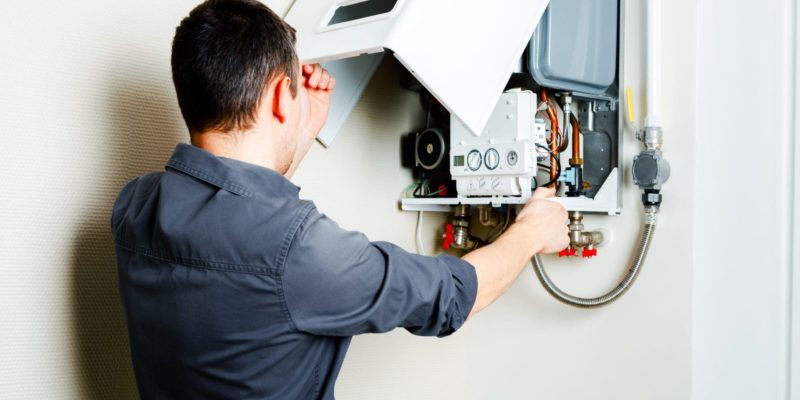It should first be mentioned that there’s no absolutely reliable guideline for this. A larger heating system in an apartment building naturally requires considerably more time than a small to moderately sized system in a house or single-family dwelling. Furthermore, the duration is determined by the work that needs to be done. For example, if no parts are worn, the engineer doesn’t need to remove and install new parts. However, significant wear and tear automatically increases the time required.
The Gas Safe registered engineer typically performs the following tasks, among others:
- Setting boiler and flow temperature
- Functional testing of individual elements such as the control system and safety components
- Cleaning
- Flue gas analysis (Exhaust gas measurement)
- Inspection, and if necessary removal and installation of wear parts
You can read the details of what was done in the service report that will be handed out afterwards.
You can expect maintenance on a gas boiler to take approximately 20 to 60 minutes. Gas boilers are relatively compact, and especially with newer systems, only a few wear parts need replacing. However, this number can gradually increase with the system’s operating time. In cases of significant wear or system issues, maintenance may take between 60 and 120 minutes.
For an oil heating system, you can expect the process to take approximately one to two hours. For older systems with a high degree of soiling or where many components need replacing, the entire process could even take longer than two hours.
A pellet heating system typically also requires two hours or more for maintenance. The technician must inspect not only the system itself, but also the storage and conveying equipment, as the system won’t function without both. If the technician also cleans the chimney/flue, the expected duration will increase further. The exact time required in your specific case can be determined in advance if you know the exact model and perhaps have some reference points from last year’s system maintenance.
In contrast, heat pump maintenance is relatively quick. Since there are no burner components, their complete inspection is unnecessary. Air filters are cleaned, and if cleaning is no longer economical, the air filter is replaced directly.
